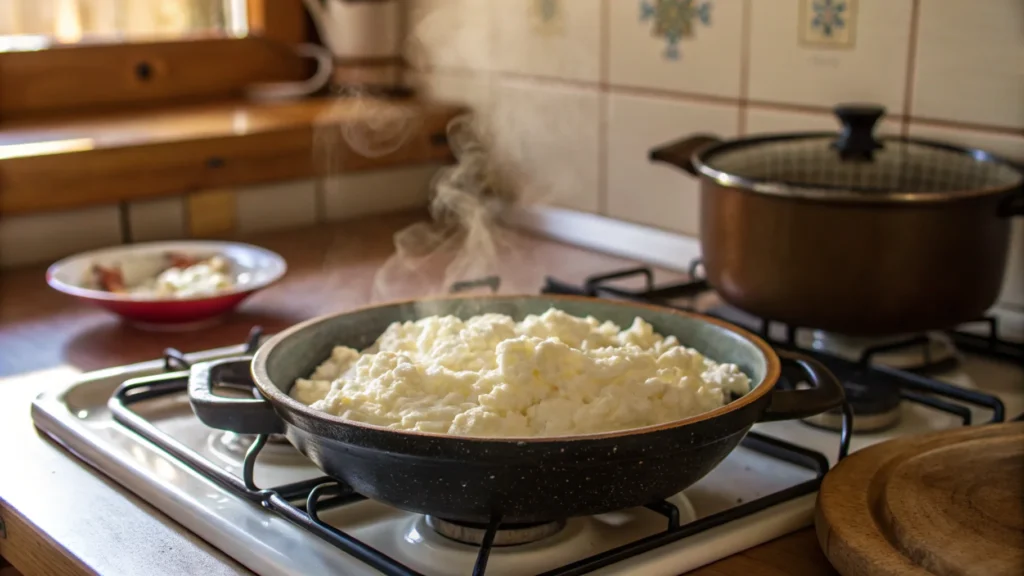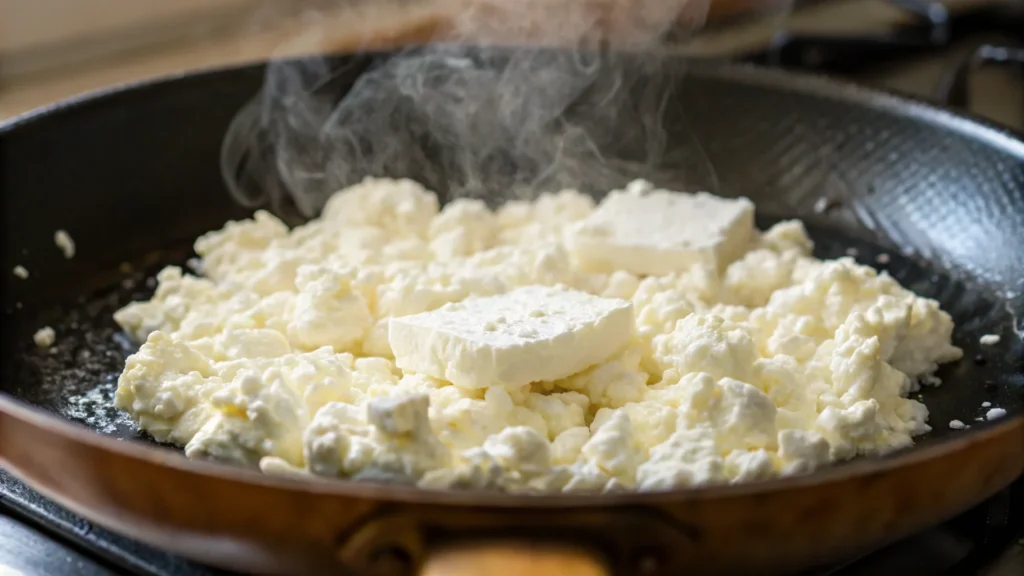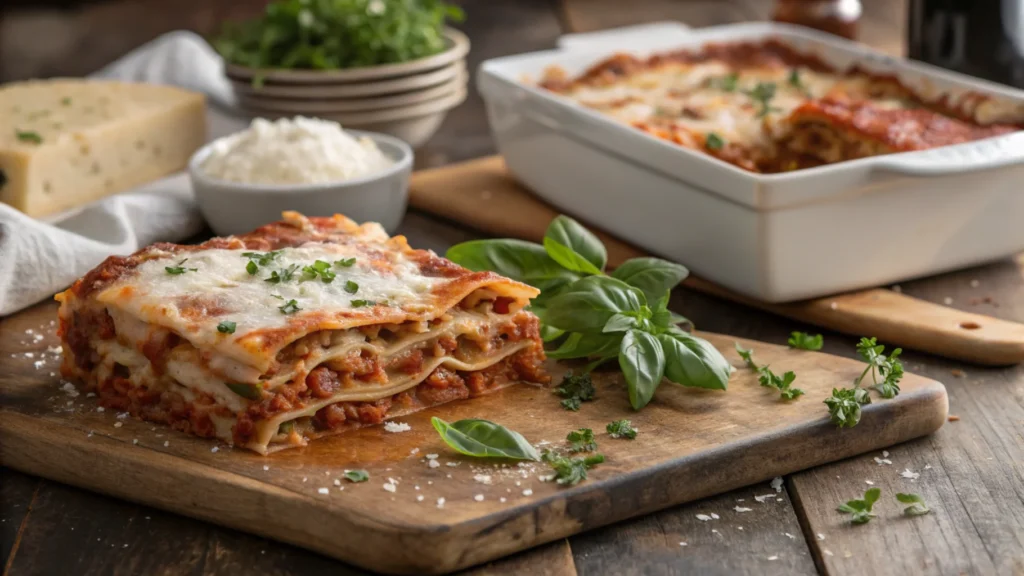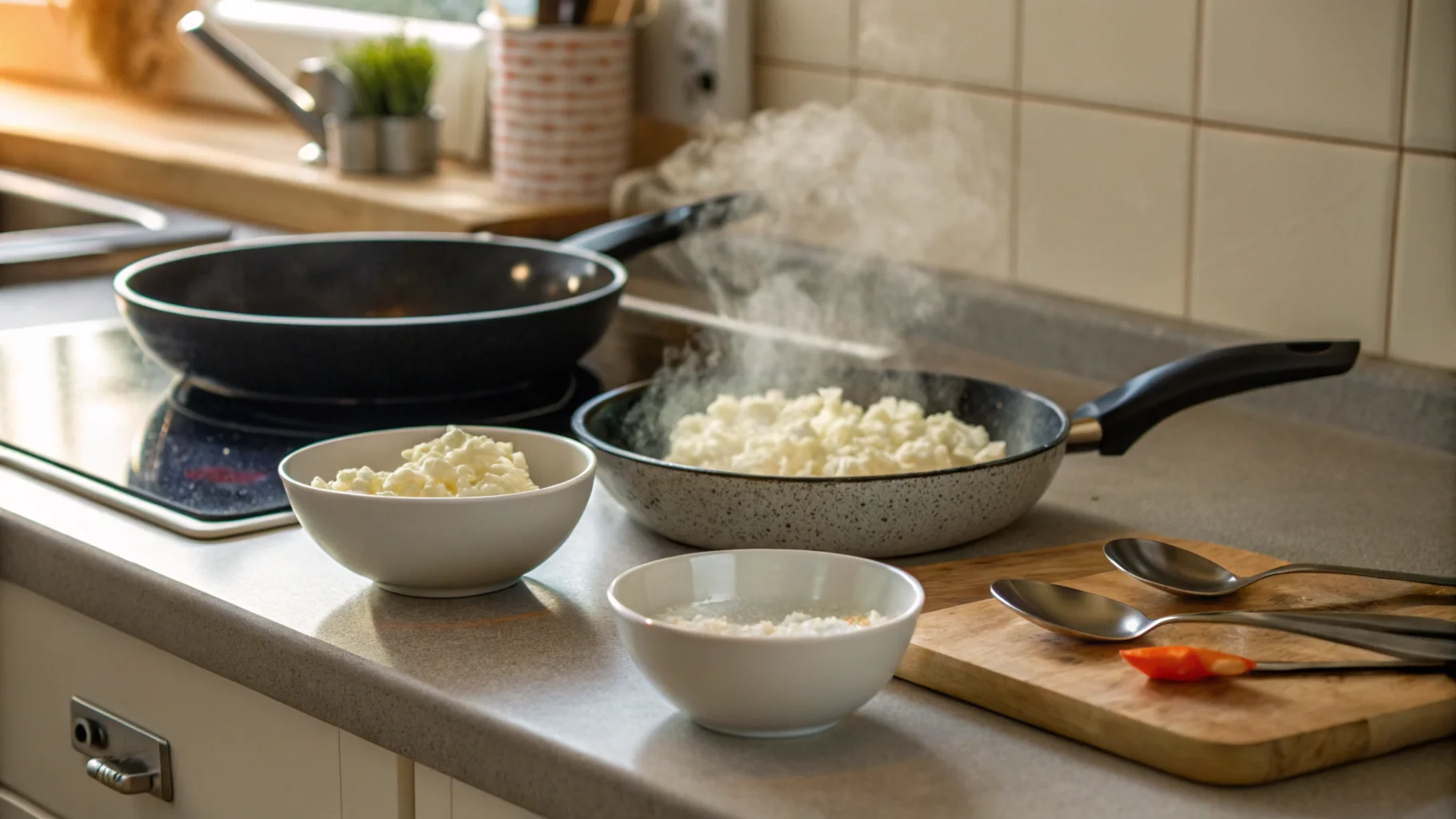Cottage cheese is a kitchen staple known for its mild flavor, creamy curds, and versatility in recipes. But have you ever wondered: Does cottage cheese melt when hot? Unlike stretchy mozzarella or gooey cheddar, cottage cheese has a unique reaction to heat. This article dives deep into the science of cottage cheese, its behavior when heated, and how to cook with it effectively. From global recipes to tips for enhancing its texture, we’ll explore everything you need to know. Let’s start by understanding the basics of cottage cheese and its distinct characteristics.
Table of contents
- Understanding the Science Behind Cottage Cheese
- Does Cottage Cheese Melt?
- How to Cook with Cottage Cheese
- Popular Recipes Using Cottage Cheese in Hot Dishes
- Health Benefits and Nutritional Value When Heated
- Comparing Cottage Cheese to Other Cheeses
- Common Challenges When Cooking with Cottage Cheese
- FAQs About Cottage Cheese and Heat
- Conclusion

Understanding the Science Behind Cottage Cheese
What is Cottage Cheese?
Cottage cheese, often described as a fresh cheese, boasts a distinct combination of soft curds and a creamy consistency. Its roots trace back centuries, with traditional recipes calling for the curdling of milk using natural acids. Made from cow’s milk, it’s a rich source of protein and calcium and is popular in both savory and sweet dishes.
The texture of cottage cheese sets it apart from other cheeses. Unlike aged varieties, its curds are left unripened, lending it a mild and slightly tangy flavor. This makes it a favorite among health-conscious individuals and a versatile ingredient in many cuisines.
Chemical Composition of Cottage Cheese
What makes cottage cheese unique is its chemical structure. The primary proteins in cheese—casein and whey—behave differently during heating. Cottage cheese is rich in casein, which forms solid curds during the cheese-making process. However, these curds don’t melt like those in cheddar or gouda. Instead, they tend to separate and release moisture.
This behavior is due to the absence of the emulsifying salts typically found in melting cheeses. These salts help hold the proteins together, creating that oozy, stretchy texture we associate with melted cheese. Without them, cottage cheese retains its lumpy texture when exposed to heat.
Why It Behaves Differently from Melting Cheeses
While most cheeses soften and spread when heated, cottage cheese tends to dry out or curdle. This is because its curds are loosely bound by whey proteins, which coagulate under heat. When the water content evaporates, the curds shrink, creating a grainy texture.
But don’t let this stop you from using it in hot dishes! By blending it with other ingredients or modifying its preparation, cottage cheese can still play a delicious role in your cooking.
Does Cottage Cheese Melt?
The Behavior of Cottage Cheese When Heated
Have you ever wondered, Does cottage cheese melt when hot? The short answer is no, but there’s more to the story. When you heat cottage cheese, it doesn’t behave like traditional melting cheeses such as mozzarella or cheddar. Instead of melting into a gooey, stretchy consistency, cottage cheese separates. The curds shrink, and the whey—the liquid part—leaks out.
This happens because cottage cheese lacks the emulsifying salts and high-fat content that help other cheeses melt smoothly. Its high water content also prevents it from softening in the same way. Instead of achieving a velvety texture, the heat intensifies its curd-like structure, leaving a grainy or lumpy appearance.
However, this doesn’t mean it can’t be used in hot dishes. With the right techniques, you can make cottage cheese more appealing in cooked recipes without expecting it to “melt.”
Common Misconceptions About Melting
One common myth is that heating cottage cheese will make it creamy like ricotta or béchamel sauce. This assumption often leads to disappointment when the curds break apart instead of blending. People also confuse it with cheeses designed to melt, assuming all cheeses behave the same under heat.
But here’s the truth: cottage cheese is unique! Its distinct structure makes it better suited for recipes where separation isn’t a problem—like casseroles or baked dishes. Once you understand its quirks, you’ll know how to use it creatively without worrying about it melting.

How to Cook with Cottage Cheese
Incorporating Cottage Cheese in Hot Dishes
Cottage cheese can shine in cooked recipes when handled right. Though it doesn’t melt, it blends well into mixtures. For example, adding it to casseroles or lasagnas gives a creamy texture while keeping its curds intact. You can also mix it into scrambled eggs for a protein boost and a slightly tangy flavor.
In soups or sauces, blending cottage cheese before adding it can help create a smooth consistency. By mixing it with spices, herbs, or other cheeses, you can reduce curdling and enhance its flavor. It’s all about combining it thoughtfully with complementary ingredients.
Achieving a Melt-Like Texture
Even though cottage cheese doesn’t melt, there are tricks to make it behave similarly. Blending it with heavy cream or yogurt can create a creamy base for sauces or baked dishes. Adding shredded mozzarella or cream cheese to the mix can also mimic the melting effect.
For an extra smooth texture, consider pureeing cottage cheese in a blender. This removes its signature lumps, making it ideal for soups, dips, and spreads. When heated carefully, the blended mixture stays cohesive, creating the illusion of melting without losing its nutritional benefits.

Popular Recipes Using Cottage Cheese in Hot Dishes
Cottage Cheese Lasagna
For those who love lasagna but want a healthier twist, cottage cheese can replace traditional ricotta. While it doesn’t melt, its creamy consistency adds a delightful texture to the dish. Simply layer the cottage cheese between sheets of pasta, along with tomato sauce, vegetables, or ground meat. The heat in the oven transforms the curds into a velvety base for your lasagna.
Want more ideas for using cottage cheese? Check out this recipe for Cottage Cheese Pizza Crust, a creative and nutritious way to enjoy pizza night.
Baked Cottage Cheese Frittata
Cottage cheese works wonders in baked frittatas, adding a subtle tang and creamy pockets of flavor. Combine whisked eggs with sautéed vegetables, herbs, and cottage cheese for a protein-packed breakfast or brunch. As the frittata bakes, the curds firm up, creating a satisfying bite without the need for melting cheese.
For another unique way to use cottage cheese in hot dishes, explore Can Cottage Cheese Be Used on Pizza?.
Health Benefits and Nutritional Value When Heated
Nutritional Profile of Cottage Cheese
Cottage cheese is celebrated for its high protein content and low-fat profile, making it a favorite among fitness enthusiasts. Packed with essential nutrients like calcium, phosphorus, and B vitamins, it’s an excellent addition to a balanced diet. Even when heated, its nutritional value remains largely intact.
Does Heating Affect Nutritional Content?
Heating cottage cheese may slightly alter its texture, but the core nutrients stay stable. The proteins denature, which changes the curd structure, but it doesn’t diminish the health benefits. This makes it a great choice for hot recipes that don’t require melting.
Looking for more recipe inspiration? You can also explore Substitute Cottage Cheese for Ricotta to make your favorite dishes lighter and healthier.

Comparing Cottage Cheese to Other Cheeses
How Cottage Cheese Differs from Melting Cheeses
When it comes to heat, not all cheeses are created equal. Does cottage cheese melt when hot? Unlike gooey mozzarella or creamy brie, cottage cheese holds its structure and doesn’t transform into a liquid state. This is because it lacks the high fat content and emulsifying salts that encourage melting in other cheeses.
Instead, cottage cheese curds firm up or separate when exposed to heat. This makes it better suited for recipes where texture is key, such as baked dishes or as a creamy filling. While it may not stretch like string cheese, its mild flavor and versatility open the door to creative cooking.
Substituting Cottage Cheese for Ricotta or Cream Cheese
Many recipes call for ricotta or cream cheese, but cottage cheese can often stand in as a lighter alternative. For example, blended cottage cheese mimics the creamy consistency of ricotta, making it an excellent choice for lasagna or stuffed shells. Similarly, it can replace cream cheese in dips or spreads when you’re looking for a healthier option.
Keep in mind that while cottage cheese offers similar nutritional benefits, its curd structure means it behaves differently when heated. To achieve a smoother texture, consider blending it before use. The result? A creamy, flavorful substitute that works wonders in both savory and sweet dishes.

Common Challenges When Cooking with Cottage Cheese
Preventing Separation During Cooking
One of the most common issues people face when cooking with cottage cheese is separation. When heated, the curds can shrink and release water, leading to a grainy texture. But don’t worry—there are ways to prevent this!
To minimize separation, cook cottage cheese at lower temperatures and avoid prolonged exposure to heat. Adding a binding agent like flour or blending the cheese with cream can also help maintain its consistency. By handling it gently, you can enjoy its creamy goodness without compromising on texture.
Enhancing the Flavor and Texture of Cottage Cheese
While cottage cheese has a mild flavor, it can be easily enhanced with a few tweaks. Adding fresh herbs, spices, or a sprinkle of grated parmesan can elevate its taste. For a smoother texture, try blending it with a splash of milk or cream.
If you’re using cottage cheese in a baked dish, consider combining it with shredded cheeses that melt, like mozzarella or cheddar. This not only improves the texture but also adds depth to the flavor profile. Whether it’s in casseroles, frittatas, or soups, these small changes can make a big difference.
FAQs About Cottage Cheese and Heat
Does Cottage Cheese Melt Like Other Cheeses?
The question many people ask is, Does cottage cheese melt when hot? The answer is no, but there’s a good reason for it. Cottage cheese lacks the emulsifiers and high-fat content found in melting cheeses like cheddar or mozzarella. Instead of turning gooey, it separates, with curds firming up and releasing moisture. While this might seem like a limitation, it actually makes cottage cheese perfect for dishes where texture is key, such as lasagnas or casseroles.
If you’re looking to make it smoother for a recipe, try blending it before cooking. This can help achieve a creamy consistency, even if it won’t technically melt.
Can You Use Cottage Cheese in Soups and Sauces?
Absolutely! Cottage cheese is a fantastic addition to soups and sauces, especially when you want to boost protein content. To avoid curdling, blend the cheese into a smooth texture before adding it to your dish. For creamy soups, it works beautifully as a base when mixed with broth or other dairy products.
Keep in mind that cooking cottage cheese at high heat can cause it to separate. To prevent this, add it toward the end of cooking or use it in recipes that don’t require extended heating.
How Do You Prevent Cottage Cheese from Curdling?
Curdling can happen when cottage cheese is exposed to too much heat. To avoid this, always cook it gently and at low temperatures. Mixing it with cream, milk, or even a bit of flour can stabilize the mixture, keeping it smooth. If you’re baking, incorporating it with other ingredients like eggs or shredded cheese can help maintain its texture.
For more inspiration on using cottage cheese in recipes, consider experimenting with baked dishes or sauces where curdling isn’t a concern. With the right approach, this versatile ingredient can be a star in both hot and cold dishes.
Conclusion
Cottage cheese might not behave like traditional melting cheeses, but that doesn’t diminish its culinary potential. Answering the question, Does cottage cheese melt when hot? reveals its unique behavior—it separates rather than melts. This distinct characteristic makes cottage cheese an excellent choice for dishes where texture plays a key role. Whether you’re adding it to lasagna, stirring it into a soup, or using it as a healthier alternative to ricotta, cottage cheese melt qualities, or lack thereof, don’t stop it from being versatile. Its mild flavor and high protein content make it a nutritional powerhouse for a variety of recipes.
By understanding how cottage cheese melt works—or doesn’t work—you can unlock its full potential in your cooking. Blending it for a creamy base, combining it with melting cheeses, or gently incorporating it into your dishes ensures the best results. While cottage cheese melt is not like traditional cheeses, its ability to adapt to countless hot and cold recipes makes it a must-have in any kitchen. So, don’t shy away from experimenting with cottage cheese melt alternatives—you might just discover your next favorite dish!

